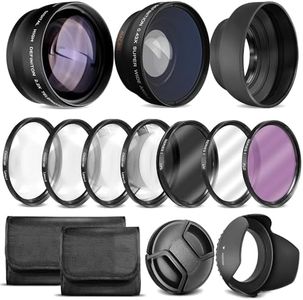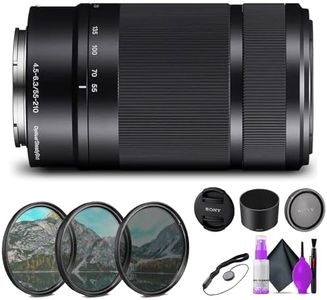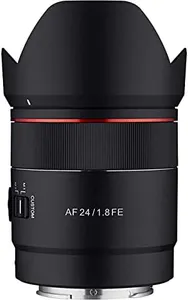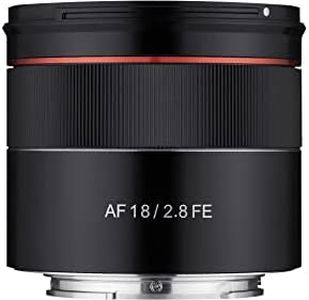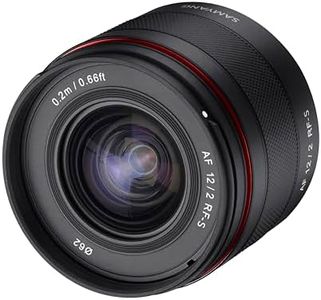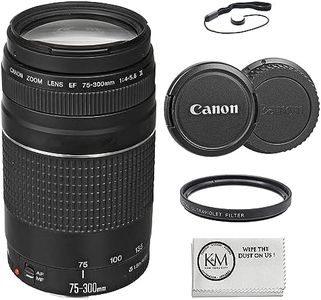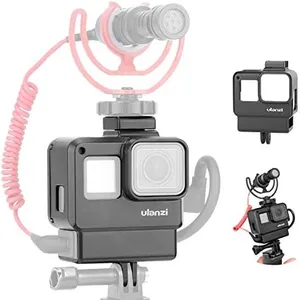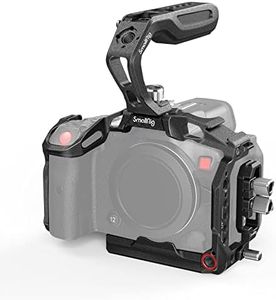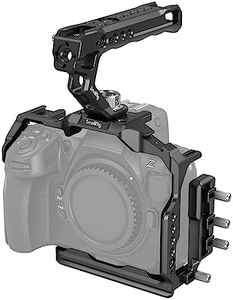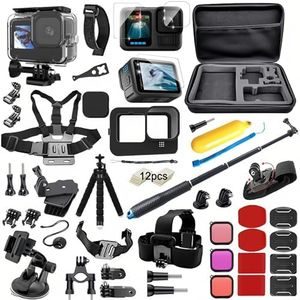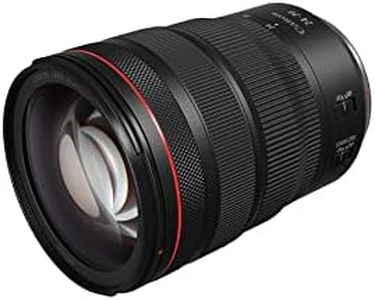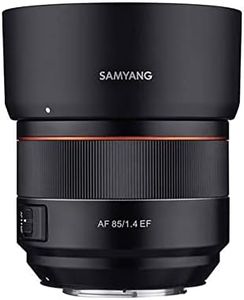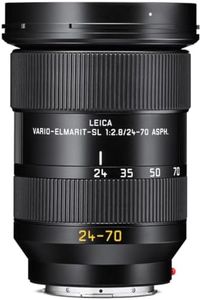10 Best Camera Lenses 2025 in the United States
Our technology thoroughly searches through the online shopping world, reviewing hundreds of sites. We then process and analyze this information, updating in real-time to bring you the latest top-rated products. This way, you always get the best and most current options available.

Our Top Picks
Winner
Sony E 55-210 mm F4.5–6.3 OSS Telephoto Zoom Lens (SEL-55210) – Lightweight APS-C w/Optical Stabilization + 3 Piece Filter Kit + Lens Cap Keeper + Cleaning Kit
Most important from
8 reviews
The Sony E 55-210mm F4.5-6.3 OSS is a lightweight telephoto zoom lens designed for Sony’s APS-C mirrorless cameras. It covers a versatile zoom range equivalent to about 82.5-315mm on full-frame, making it a solid choice for portraits, sports, and distant subjects. Its built-in Optical SteadyShot image stabilization helps reduce blur from hand shake, which is especially useful at longer focal lengths or in lower light. The lens weighs roughly 345 grams, so it’s easy to carry around for everyday shooting. Its autofocus system is quiet and smooth, which benefits both photos and videos.
The lens uses extra-low dispersion and aspherical elements to minimize common image problems like color fringing and distortion, helping produce clearer pictures. The aperture range of f/4.5 to f/6.3 means it doesn’t perform as well in very dim conditions or for creating a strong background blur compared to lenses with wider apertures. Also, image sharpness is better up to around 135mm but softens towards the longest zoom setting.
For those seeking a budget-friendly, compact zoom lens for casual telephoto needs without requiring professional-level sharpness or advanced low-light capability, this lens offers a practical and convenient option. The included filter kit and cleaning supplies add extra value for beginners wanting to maintain their gear.
Most important from
8 reviews
Samyang 24mm F1.8 AF Full Frame Lens for Sony E – Wide Angle, Lightweight, Weather Sealed, Astrophotography Mode, Custom Switch, Silent STM Focus, 9 Blades, 58mm Filter Thread (Black)
Most important from
155 reviews
The Samyang 24mm F1.8 AF lens is a solid choice if you're looking for a wide-angle lens for your Sony E-mount full-frame camera. Its 24mm focal length gives you a broad 83.7° view, which is great for landscapes, travel, and even astrophotography, especially with its dedicated night sky mode. The bright F1.8 aperture is a major plus because it lets in plenty of light, helping you shoot clearer photos in darker settings and create smooth background blur (bokeh) with its 9 rounded blades—perfect for artistic portraits or creative shots.
The autofocus is driven by a quiet and fast STM motor, making it suitable not only for still photos but also for video recording without distracting noise. While the lens doesn’t have built-in image stabilization, its lightweight (about 1 pound) and compact design make it easy to carry around and handle. It also features weather sealing in key areas, so it can withstand light rain or dust, which is handy for outdoor shoots. Customizable controls like the focus-hold button and adjustable ring add flexibility if you want to personalize your shooting experience.
Since this is a prime lens, you won’t be able to zoom in or out. If you want versatility in framing your shots without changing lenses, a zoom lens might be better. Although sharpness and build quality are generally praised, it isn’t considered a top-of-the-line professional lens, but it offers excellent value for enthusiasts and hobbyists looking to enhance their wide-angle photography.
Most important from
155 reviews
Samyang AF 18mm F2.8 Auto Focus Full Frame Wide Angle Lens for Sony E Mount – Compact, Ultra Lightweight, 58mm Filter Thread, High Resolution Optics, Quiet STM Autofocus
Most important from
252 reviews
The Samyang AF 18mm F2.8 lens is a lightweight and compact wide angle lens designed specifically for Sony E mount full frame and APS-C cameras. Its ultra-wide 18mm focal length offers a broad view, making it great for landscapes, architecture, or interior photography. The aperture range of f/2.8 to f/22 allows decent low-light performance and some control over depth of field, though it’s not the brightest lens available.
It features quiet and reliable autofocus with a stepping motor (STM), which is helpful for both stills and video without distracting noise. The lens is built with a durable metal mount and strengthened glass, ensuring it can handle regular use. Weighing just over 5 ounces and measuring around 2.5 inches, it is very portable and easy to carry around. However, this lens does not have image stabilization, so handheld shots in low light might be more challenging unless your camera body offers stabilization.
The 58mm filter thread is a useful size for adding filters like polarizers or ND filters. While it’s a prime lens, meaning it has a fixed focal length, this allows it to deliver sharp, high-resolution images but without the flexibility of zoom. This lens suits photographers who want an affordable, quality wide angle option for their Sony cameras, especially if portability and image sharpness are priorities. It may be less ideal for those needing image stabilization or zoom versatility.
Most important from
252 reviews
Buying Guide for the Best Camera Lenses
Choosing the right camera lens can significantly impact the quality of your photos and your overall photography experience. The right lens depends on what you plan to shoot, your camera type, and your personal preferences. Understanding the key specifications of camera lenses will help you make an informed decision and ensure you get the best lens for your needs.FAQ
Most Popular Categories Right Now
